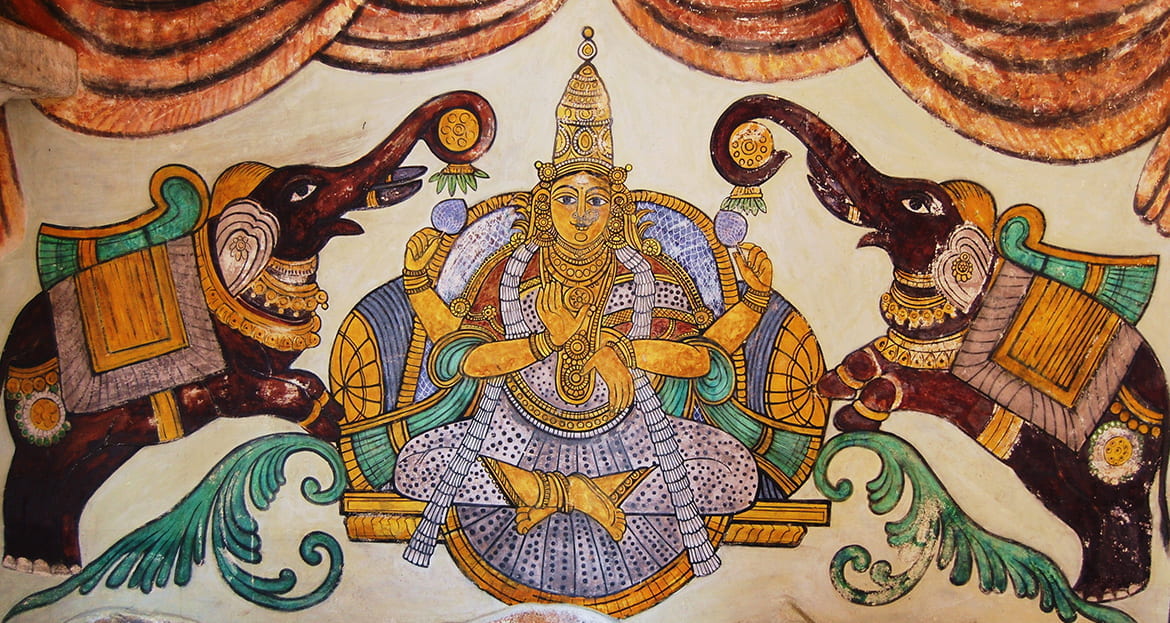
IN REVIEW
Hindu Worlds of Art and Culture
Murals of the Brihadisvara Temple. Ankushsamant via Wikimedia Commons, CC-BY-SA-3.0
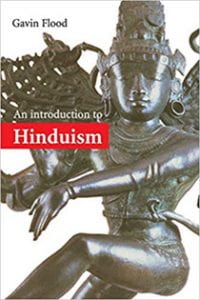 An Introduction to Hinduism
An Introduction to HinduismGavin Flood (Cambridge University Press, 1996).
This thematic and historical introduction traces the development of Hindu traditions from ancient origins and major deities to the modern world, with emphasis placed on tantric traditions, Hindu ritual, and Dravidian influences.
 India: A Sacred Geography
India: A Sacred GeographyDiana L. Eck (Random House, 2012).
Eck’s exploration of the sacred places of India takes the reader on a journey through the beliefs and history of this rich and profound place, while providing a basic introduction to Hindu religious ideas and their significance for our understanding of the modern sense of “India” as a nation.
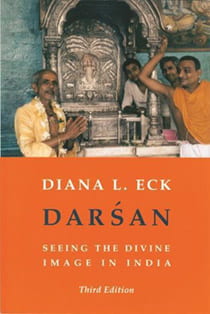 Darsan: Seeing the Divine Image in India
Darsan: Seeing the Divine Image in India Diana L. Eck (rev. ed.; Columbia University Press, 1998).
The role of the visual is essential to Hindu tradition and culture, but many attempts to understand India’s divine images have been laden with misperceptions. Darsan, a Sanskrit word that means “seeing,” is a book of ideas to help us read, think, and look at Hindu images with appreciation and imagination.
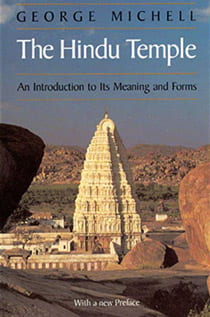 The Hindu Temple: An Introduction to Its Meaning and Forms
The Hindu Temple: An Introduction to Its Meaning and FormsGeorge Michell (University of Chicago Press, 1977).
This introduction to the cultural, religious, and architectural significance of the Hindu temple employs a profusion of photographs, building plans, and drawings of architectural details.
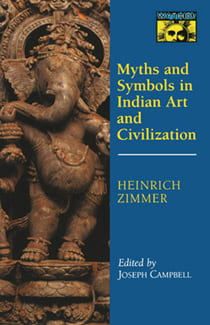 Myths and Symbols in Indian Art and Civilization
Myths and Symbols in Indian Art and CivilizationHeinrich Zimmer (ed. Joseph Campbell; Princeton University Press, 2017).
First published in 1946, this landmark work analyzes key motifs found in legend, myth, and folklore. It provides a comprehensive introduction to visual thinking and picture reading in Indian art and thought.
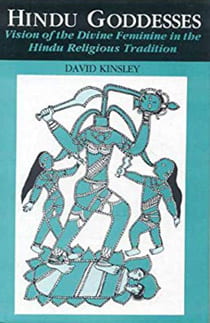 Hindu Goddesses: Visions of the Divine Feminine in the Hindu Religious Tradition
Hindu Goddesses: Visions of the Divine Feminine in the Hindu Religious TraditionDavid Kinsley (University of California Press, 1988).
Kinsley’s sourcebook explores the rich history of Hindu goddess worship and provides a survey of the major goddesses by presenting individual portraits of each goddess’s appearances, roles, and significance within Hinduism.
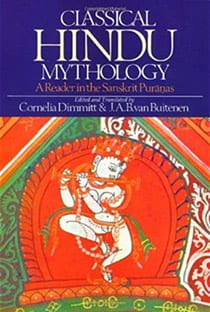 Classical Hindu Mythology: A Reader in the Sanskrit Puranas
Classical Hindu Mythology: A Reader in the Sanskrit PuranasCornelia Dimmitt and J. A. B. van Buitenen, eds. and trans. (Temple University Press, 1978).
This anthology of primary sources from the Puranas features myths of creation, stories of the great gods and goddesses, and tales of rivers and cities, heroes, demon, and sages.
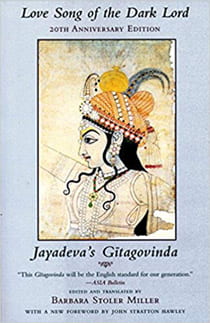 The Love Song of the Dark Lord
The Love Song of the Dark LordBarbara Stoler Miller, ed. and trans. (20th anniv. ed.; Columbia University Press, 1997).
Jayadeva’s dramatic lyrical poem Gitagovinda, a source of religious inspiration in both medieval and contemporary Vaishnavism, is accessible in this renowned translation. The poem is an important part of Indian devotional literature.
 The Ramayana
The RamayanaWilliam Buck (35th anniv. ed.; University of California Press, 2012).
This retelling of the Ramayana and the Mahabharata, two Sanskrit verse epics, written some 2,000 years ago, is here made accessible to the modern reader without compromising the spirit and lyricism of the originals.
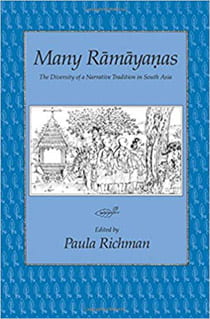 Many Ramayanas: The Diversity of a Narrative Tradition in South Asia
Many Ramayanas: The Diversity of a Narrative Tradition in South Asia Paula Richman, ed. (University of California Press, 1991).
The multivocal nature of the Ramayana is evident in this volume of collected essays, which covers diverse retellings of the story of the exiled prince Rama, who rescues his abducted wife by battling the demon king who has imprisoned her.
Please follow our Commentary Guidelines when engaging in discussion on this site.

